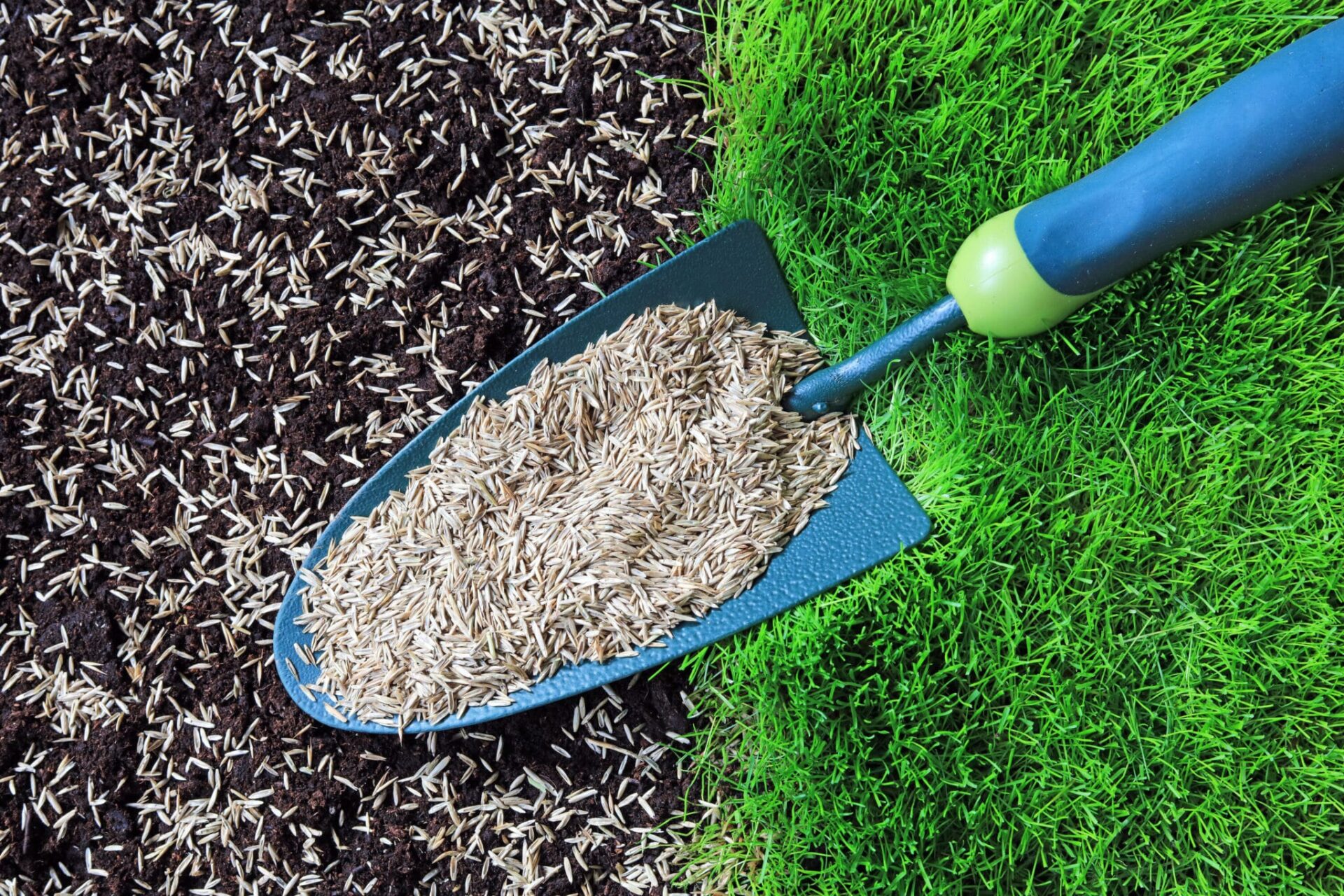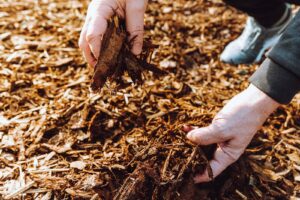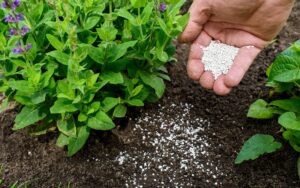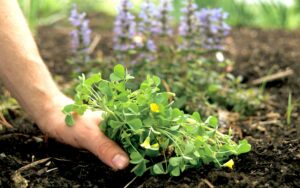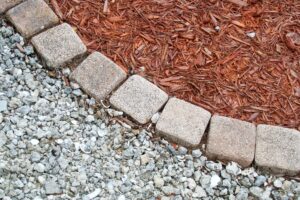How to Reseed Your Lawn: A Complete Guide to Rejuvenating Your Yard
Is your lawn looking patchy, thin, or worn out? Reseeding is one of the most effective ways to breathe new life into a struggling yard without starting completely from scratch. Whether you’re dealing with bare spots, thinning grass, or simply want to enhance the overall health and appearance of your lawn, this comprehensive guide will walk you through everything you need to know about lawn reseeding.
Understanding Lawn Reseeding: What It Is and Why It Matters
Reseeding, also known as overseeding, is the process of spreading grass seed over an existing lawn to fill in bare spots, increase density, introduce better grass varieties, and improve the overall health and appearance of your turf. Unlike completely replacing your lawn, reseeding works with what you already have, making it a more cost-effective and less labor-intensive approach to lawn renovation.
As a homeowner, you might be wondering if your lawn truly needs reseeding. The signs are often clear: thinning grass, patchy areas, increasing weed presence, or a lawn that’s lost its vibrant color and resilience. Even if your lawn isn’t showing obvious signs of distress, periodic reseeding can prevent future problems and maintain optimal lawn health over time.
Benefits of Reseeding Your Lawn
Reseeding offers numerous advantages beyond simply filling in bare patches. When you introduce new grass seed to your existing lawn, you’re providing an opportunity for better grass varieties to establish themselves. Modern grass seed varieties are often developed to be more drought-resistant, disease-resistant, and better able to withstand foot traffic than older varieties. Additionally, a denser lawn created through reseeding naturally crowds out weeds, reducing the need for chemical weed control measures.
Another significant benefit is improved soil health. The process of reseeding typically involves some degree of soil preparation, which can help address compaction issues and improve soil structure. This creates a better growing environment not just for your new grass seeds but for your existing grass as well.
Timing Is Everything: When to Reseed Your Lawn
Successful reseeding depends heavily on timing. Grass seed requires specific conditions to germinate properly and establish strong root systems before facing seasonal stresses like extreme heat, cold, or drought.
Ideal Timing for Cool-Season Grasses
If your lawn consists of cool-season grasses like Kentucky bluegrass, perennial ryegrass, or tall fescue (common in the northern United States), early fall is your optimal reseeding window. According to the United States Department of Agriculture (USDA), reseeding cool-season grasses in early fall (typically late August through September) provides ideal conditions for seed germination and establishment. The soil is still warm from summer, promoting quick germination, while the cooler air temperatures reduce stress on seedlings. Additionally, fall typically brings more consistent rainfall, which helps with germination and reduces the need for supplemental watering.
A secondary option for cool-season grasses is early spring, typically from mid-March to early May, once soil temperatures reach about 50-60°F. While spring reseeding can be successful, it gives your new grass less time to establish before summer heat arrives, potentially requiring more attentive care.
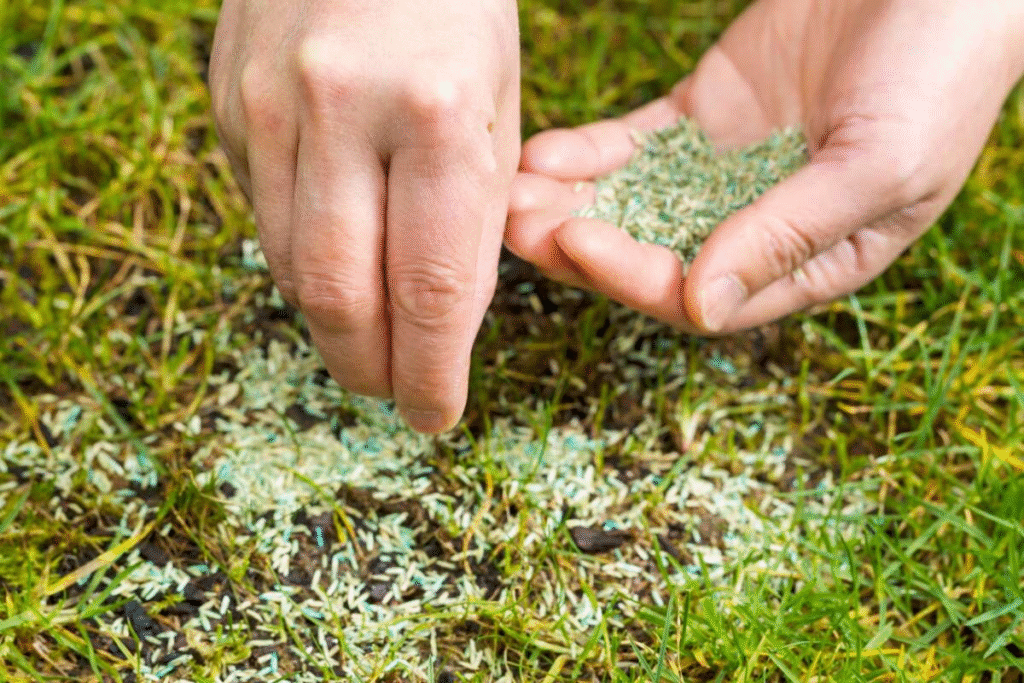
Ideal Timing for Warm-Season Grasses
If you’re working with warm-season grasses like Bermuda grass, zoysia, or St. Augustine grass (common in southern regions), late spring to early summer provides the best reseeding conditions. These grasses thrive in warm soil temperatures of 65-70°F or higher. According to the U.S. National Park Service resource on sustainable lawn care (https://www.nps.gov/articles/sustainable-lawn-care.htm), reseeding warm-season grasses from late April through June gives them the entire summer growing season to establish strong root systems before fall cooling begins.
Preparing Your Lawn for Reseeding: A Step-by-Step Approach
Proper preparation is critical for successful reseeding. Taking the time to correctly prepare your lawn will significantly improve seed germination rates and help your new grass establish more quickly and effectively.
Step 1: Assess Your Lawn and Identify Problem Areas
Before purchasing seed or equipment, walk your property and identify areas that need attention. Look for:
- Bare patches where grass is completely absent
- Thinning areas where grass growth is sparse
- Areas dominated by weeds rather than desirable grass
- Sections damaged by pests, disease, or heavy traffic
This assessment will help you determine how much seed you’ll need and whether some areas require more intensive preparation than others.
Step 2: Test Your Soil
Understanding your soil’s composition and nutrient profile is invaluable for successful reseeding. A soil test will reveal your soil’s pH level and nutrient deficiencies, allowing you to make informed decisions about soil amendments. Most county extension offices offer affordable soil testing services, or you can purchase DIY soil test kits from garden centers.
Ideal soil pH for most lawn grasses falls between 6.0 and 7.0. If your soil is too acidic (below 6.0), you may need to apply lime; if it’s too alkaline (above 7.0), sulfur applications might be beneficial. The soil test results will also indicate whether you need to add specific nutrients like nitrogen, phosphorus, or potassium to create optimal growing conditions for your new grass seed.
Step 3: Mow Low and Remove Debris
Approximately one week before reseeding, mow your existing lawn shorter than usual—about 1.5 to 2 inches high. This shorter length helps ensure that new seedlings receive adequate sunlight after germination and aren’t overshadowed by existing grass. After mowing, rake thoroughly to remove grass clippings, fallen leaves, and any other debris that could prevent seeds from making good soil contact.
Step 4: Address Existing Weed Problems
If your lawn has significant weed issues, you’ll want to address these before reseeding. However, timing is crucial here. Most herbicides require a waiting period of 2-4 weeks before it’s safe to seed. Check the herbicide label for specific information about seeding intervals after application. Alternatively, you can manually remove weeds in smaller areas or opt for physical weed control methods like dethatching or core aeration, which have the added benefit of preparing the soil for seeding.
Step 5: Dethatch and Aerate
Over time, lawns develop a layer of thatch—a combination of dead grass, roots, and other organic matter that accumulates between the soil surface and the green vegetation. A thick thatch layer (more than 1/2 inch) can prevent water, air, and nutrients from reaching grass roots and can also prevent new seed from making contact with soil.
Use a dethatching rake or power dethatcher to remove excessive thatch. Following dethatching, core aeration—the process of removing small plugs of soil from your lawn—alleviates soil compaction and creates an ideal environment for new seed. Aeration improves water infiltration, enhances soil gas exchange, and creates perfect little pockets for seed to settle into.
You can rent dethatching and aerating equipment from most home improvement stores if you don’t own these tools. For larger lawns, consider hiring a professional lawn care service to perform these tasks.
Step 6: Level the Surface and Add Soil Amendments
After dethatching and aerating, address any low spots or uneven areas by adding topsoil or a soil/compost mixture. This is also the time to incorporate any amendments recommended by your soil test—such as lime, sulfur, or specific fertilizers. Level the surface using a rake to ensure even seed distribution and prevent water pooling after rain or irrigation.
Selecting the Right Seed for Your Lawn
Choosing the appropriate grass seed is crucial for reseeding success. The right selection depends on your climate, soil conditions, sun exposure, and how you use your lawn.
Matching Seed to Your Existing Lawn
In most reseeding projects, you’ll want to select seed varieties that match or complement your existing lawn. Using the same grass type ensures a uniform appearance once the new seed establishes. If you’re unsure what type of grass you currently have, take a sample to your local extension office or garden center for identification.

Climate-Appropriate Choices
Your geographic location and typical weather patterns should heavily influence your seed selection. The United States is generally divided into cool-season grass regions (northern states), warm-season grass regions (southern states), and transition zones where either type might work depending on specific conditions.
| Grass Type | Best Climate | Sun Requirements | Drought Tolerance | Traffic Tolerance | Maintenance Level |
|---|---|---|---|---|---|
| Kentucky Bluegrass | Cool-season | Full sun to light shade | Moderate | High | High |
| Perennial Ryegrass | Cool-season | Full sun to partial shade | Low to moderate | High | Moderate |
| Tall Fescue | Cool-season/Transition | Full sun to shade | High | High | Low to moderate |
| Fine Fescue | Cool-season | Partial to full shade | Moderate | Low | Low |
| Bermuda grass | Warm-season | Full sun | Very high | Very high | High |
| Zoysia | Warm-season/Transition | Full sun to light shade | High | High | Moderate |
| St. Augustine | Warm-season | Full sun to partial shade | Moderate | Moderate | High |
| Buffalo grass | Warm-season | Full sun | Very high | Moderate | Very low |
Consider Seed Blends and Mixes
Seed blends (multiple varieties of the same grass type) and seed mixes (combinations of different grass types) often perform better than single varieties because they provide genetic diversity. This diversity makes your lawn more resilient against diseases, pests, and varying environmental conditions. Many quality seed products on the market are specially formulated blends designed for specific conditions like high-traffic areas, shade tolerance, or drought resistance.
Quality Matters
When purchasing grass seed, don’t focus solely on price. Higher-quality seeds typically have:
- Higher germination rates
- Lower weed seed percentages
- Less inert matter (debris)
- Better disease resistance
- Enhanced drought tolerance
Always check the seed label for the germination rate (ideally above 85%), purity percentage (aim for 95% or higher), and weed seed content (should be less than 0.5%). While premium seed costs more upfront, it often saves money in the long run by requiring fewer reseeding attempts and less maintenance.
The Reseeding Process: Applying Seed for Optimal Results
With preparation complete and the right seed selected, you’re ready for the actual reseeding process.
Calculating Seed Quantity
Different grass types have different seeding rates. Check the seed package for recommended application rates, usually listed as pounds per 1,000 square feet. Applying too little seed results in thin coverage, while applying too much can cause competition among seedlings, potentially weakening the entire stand. As a general guideline, most cool-season grasses require 3-4 pounds per 1,000 square feet for reseeding, while warm-season grasses typically need 1-2 pounds per 1,000 square feet.
Seed Application Methods
For even distribution, use a broadcast spreader for larger areas or a hand spreader for smaller spaces. Set your spreader to half the recommended seed rate and apply the seed in two passes, walking in perpendicular directions. This cross-pattern application helps ensure uniform coverage and prevents streaking or missed spots.
For small patches, you can apply seed by hand, but take care to distribute it as evenly as possible. Mixing the seed with fine sand can help achieve more even distribution when hand-seeding.
Ensuring Good Seed-to-Soil Contact
After spreading the seed, lightly rake the area to cover the seed with a thin layer of soil—about 1/8 inch for most grass types. This step is crucial as it protects the seed from birds and wind while still allowing it to receive sufficient light for germination. For larger areas, you might use a lawn roller filled about one-third with water to gently press the seed into the soil without burying it too deeply.
Post-Seeding Care: Nurturing Your New Grass
The days and weeks following reseeding are critical for success. Proper care during this establishment period sets the foundation for long-term lawn health.
Watering Schedule for New Seed
Consistent moisture is essential for germination and early seedling development. The cardinal rule is to keep the seeded area consistently moist but not soggy. This typically means:
- Initial period (first 1-2 weeks): Light watering 2-4 times daily, depending on temperature and wind conditions. The goal is to keep the top inch of soil consistently moist.
- After germination: Gradually reduce watering frequency but increase duration, transitioning to deeper, less frequent watering as seedlings establish.
- Established seedlings (2-3 inches tall): Water deeply 2-3 times per week, providing about 1 inch of water each week, adjusted for rainfall.
The best times to water are early morning or late afternoon when evaporation rates are lower. Avoid evening watering when possible, as prolonged moisture overnight can promote fungal diseases.
Fertilization Strategies
Most quality seed mixes contain some starter fertilizer, but additional fertilization helps new grass establish quickly. According to the EPA’s recommendations for sustainable lawn care (https://www.epa.gov/greening-epa/lawn-and-garden-care), approximately 2-4 weeks after germination, apply a starter fertilizer with higher phosphorus content to encourage root development. Follow package instructions for application rates, typically around 1 pound of nitrogen per 1,000 square feet.
Once your new grass reaches mowing height, transition to regular fertilization practices appropriate for your grass type and region. Cool-season grasses benefit from fall fertilization, while warm-season grasses respond best to summer feeding.
Traffic Restrictions
Limit foot traffic on newly seeded areas until the grass has been mowed at least 2-3 times. New seedlings have fragile root systems that are easily damaged by compression. If you must walk on newly seeded areas, do so quickly and try to vary your path to prevent repeatedly stepping in the same spots.
First Mowing
Wait until your new grass reaches about one-third higher than the desired cutting height before mowing. For most residential lawns, this means waiting until the grass is about 3-4 inches tall, then mowing to about 2.5-3 inches. Ensure your mower blades are sharp to make clean cuts that minimize stress on young plants. Remove no more than one-third of the grass blade length in a single mowing to avoid shocking the plants.
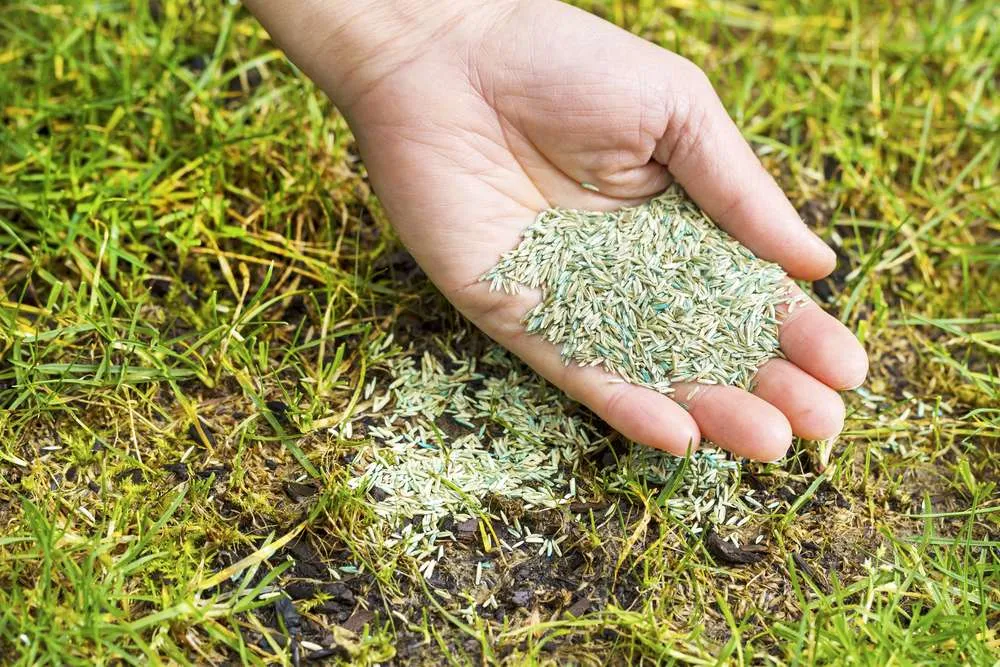
Common Reseeding Challenges and Solutions
Even with careful planning and execution, you might encounter some challenges during the reseeding process. Being prepared with solutions helps ensure successful results.
Weather Complications
Unexpected heavy rain can wash away seed, while prolonged dry spells increase the watering demands. If heavy rain is forecast within 24 hours of seeding, try to delay your project. If unexpected washout occurs, assess the damage and reseed affected areas as needed. During dry periods, adjust your watering schedule to maintain consistent moisture levels.
Bird and Wildlife Feeding
Birds love newly spread seed. To deter them, consider covering small seeded areas with straw or seed germination blankets. For larger areas, try visual deterrents or apply slightly more seed than needed to account for some loss.
Uneven Germination
If you notice patchy germination, it could result from uneven seed distribution, inconsistent watering, or variations in soil conditions. For minor patchiness, wait until the initial growth is established (about 4-6 weeks), then spot-seed the bare areas. For significant problems, you might need to reassess your soil conditions or watering practices before trying again.
Long-term Maintenance: Preserving Your Reseeding Investment
Your reseeding project doesn’t end once the new grass is established. Proper long-term maintenance ensures your rejuvenated lawn remains healthy for years to come.
Regular Maintenance Schedule
Develop a seasonal maintenance calendar that includes:
- Consistent mowing at the appropriate height for your grass type
- Strategic fertilization based on grass type and seasonal needs
- Regular deep watering rather than frequent shallow watering
- Annual dethatching and aeration as needed
- Periodic soil testing to monitor nutrient levels and pH
Periodic Overseeding
Even well-maintained lawns benefit from occasional overseeding. Consider lightly overseeding every 2-3 years to introduce new grass varieties and maintain density. This preventive approach keeps your lawn thick and resistant to weeds, drought, and disease.
Sustainable Lawn Practices
Embrace sustainable practices that reduce environmental impact while maintaining lawn health:
- Leave grass clippings on the lawn to return nutrients to the soil
- Use organic fertilizers when possible
- Practice integrated pest management rather than preemptive chemical applications
- Consider reducing lawn size by incorporating native plant gardens or ground covers in less-used areas
Conclusion: Your Path to a Revitalized Lawn
Reseeding your lawn isn’t just about filling in bare spots—it’s an investment in the overall health and beauty of your outdoor space. By understanding the process, timing your project appropriately, selecting the right seed, and providing proper care during establishment, you can transform a thin, patchy lawn into a lush, resilient carpet of green.
Remember that lawn care is a continuous process rather than a one-time event. The effort you invest now in properly reseeding your lawn will pay dividends in reduced maintenance, fewer pest and disease problems, and increased enjoyment of your outdoor space for years to come. With patience and proper technique, you’ll soon be enjoying the satisfying feeling of soft, thick grass beneath your feet and the pride that comes with a beautifully maintained lawn.
